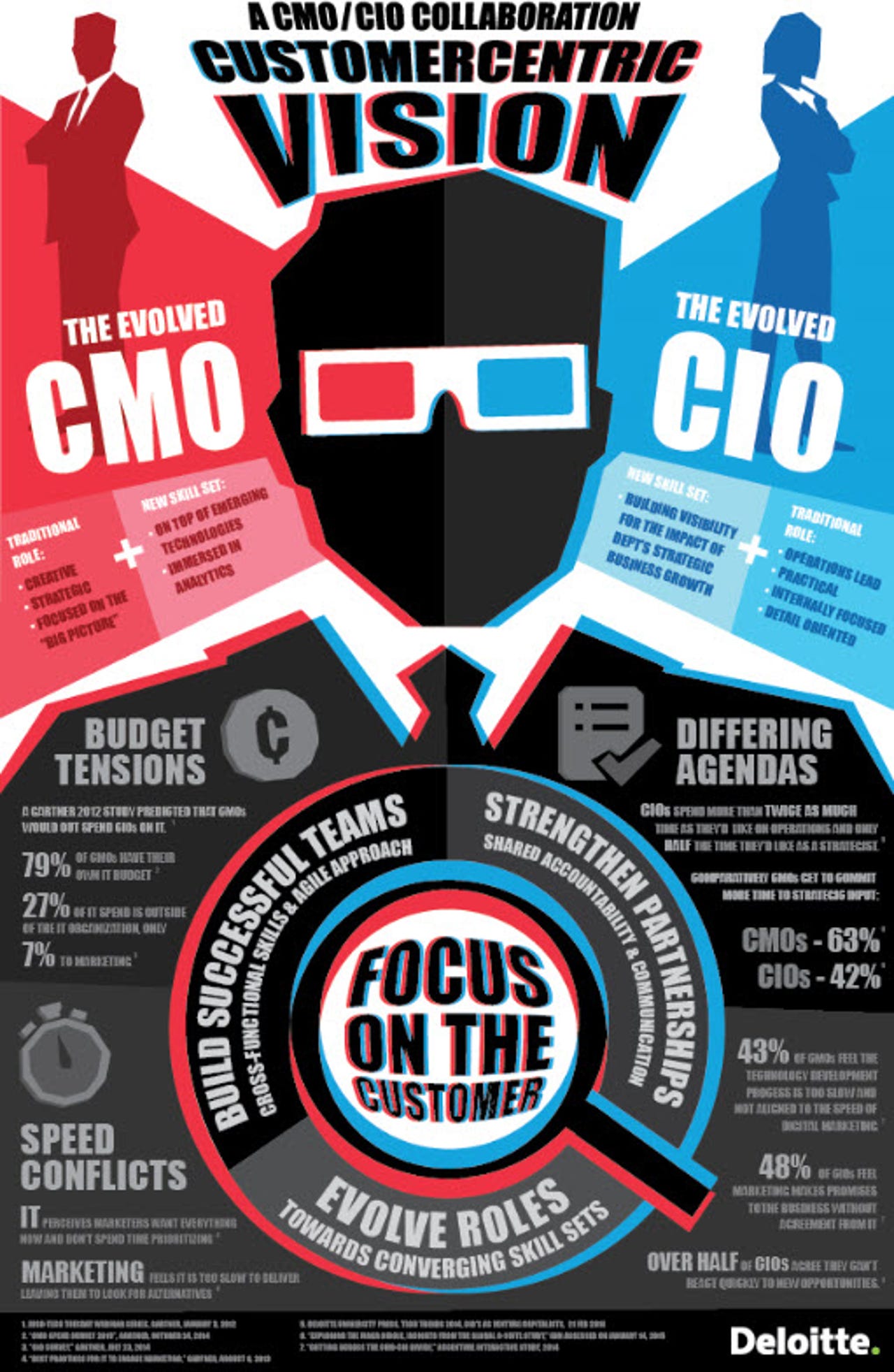Deloitte Digital: Chief Marketing Officers invading IT turf

Deloitte Digital just released research on the CIO / CMO relationship. Although lousy presentation makes the data hard to decipher, several points are worth examining.
According the "methodology" section of the press release, Deloitte performed keyword analysis using Sysomos MAP and Salesforce Radian 6. They examined "54,552 pieces of social media content mentioning both CMOs and CIOs," looking at "content specifically addressing how to bridge the gap and drive a customer-centric organization, and the key milestones of this collaboration pathway."
I assume the analysts sought keywords that would shed light on the CIO / CMO relationship. Deloitte provides no additional detail about their analysis methods, which limits the trust we can place in the data.
That said, a few conclusions are interesting:
- 79 percent of CMOs have their own IT budget. [Note: I suspect they mean "technology budget" rather than "IT budget."]
- 27 percent of CMOs' technology spend falls outside of IT
- 71 percent of CMO / CIO conversations focused on "bridging the gap between the two leaders"
- 43 percent of CMOS believe technology development, presumably within IT, is too slow
Based on this data, we can draw the following implications:
- Technology is a significant part of marketing spend. Undoubtedly, this trend will continue as more businesses digitize their processes. The digital world is based on technology rather than paper, which means higher tech budgets for marketers.
- Marketers will continue to develop expertise in technology because tech is so interwoven with modern marketing activities. Many digital marketing products fall outside the oversight of IT, especially with standalone, cloud-based marketing analytics tools.
- Although the media popularizes the notion of a war between CIO and CMO, most executives just want to get their work done. Therefore, it makes sense that a significant number of C-level conversations are related to cooperation and collaboration.
- It's surprising that more than half of the CMOs do not have an issue with IT speed. For the Chief Marketing Officer, time to market is a fundamental metric for campaigns while IT and the CIO face constraints such as security, testing, and project governance. These limitations necessarily slow down the pace of technology development within IT.
Deloitte deserves credit for undertaking research on these issues. However, the poor presentation devalues the research itself. Next time, I suggest the following advice to improve both usefulness and research credibility:
Do not create infographics that require 3D glasses. Much of the graphic is impossible to read because the supplied size is too small and pixelated.

Expose more detail about the data. The methodology description and analysis of the data are vague, leading to questions about the quality of the research effort and findings. Far better to present detail about the specific keywords, frequencies, and sources that were analyzed.
Offer more than a press release. Deloitte Digital describes the findings in a press release and blog post that refer to each other. Paid content in the Wall Street Journal and an article in VentureBeat add little new information. If the data is meaningful then present it with a level of richness commensurate with its importance; if not, then do not release it publicly.